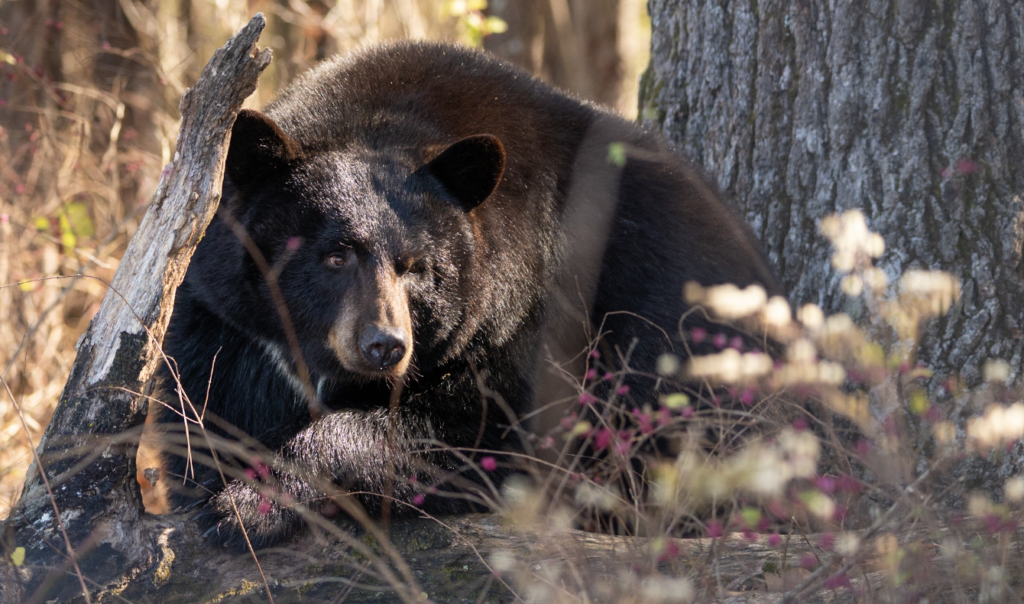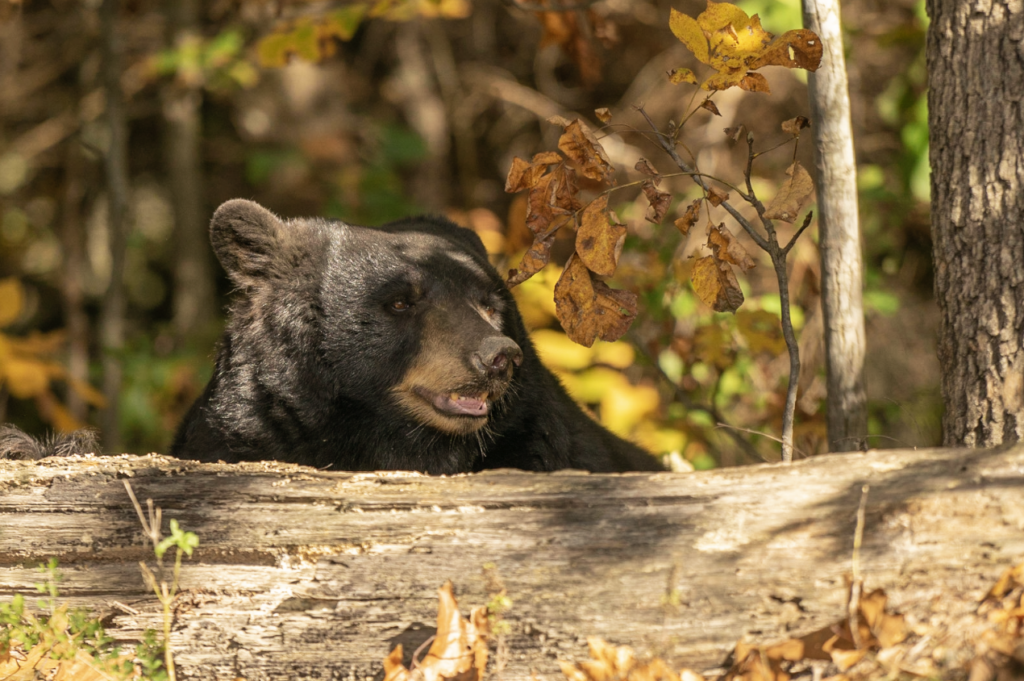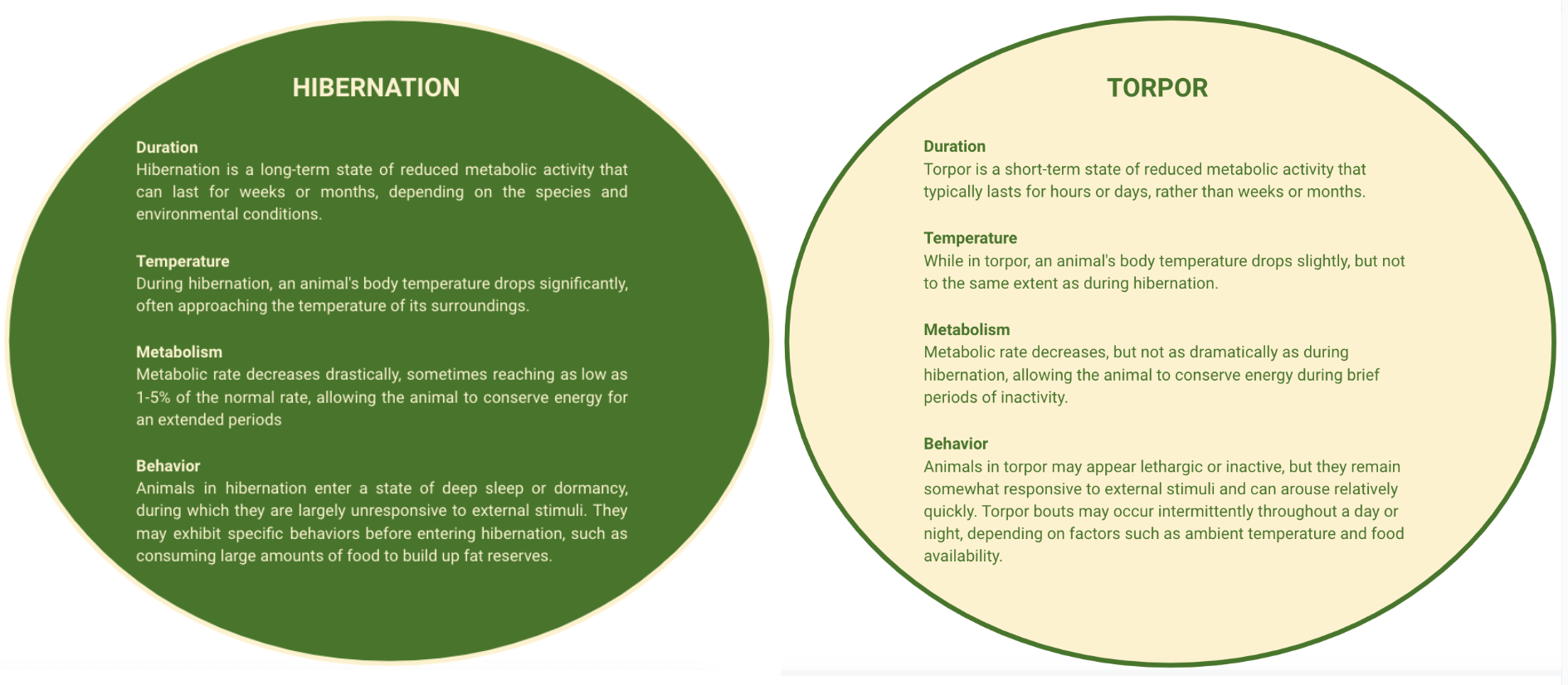
Koda G is out in her massive acreage habitat, dwelling life like a wild bear.
The commonest questions we obtain from guests in the course of the winter at Turpentine Creek are “The place are all of the bears?” and “Are they hibernating”? This can be a very scientific query, and we plan to reply it in as we speak’s weblog.
Within the animal kingdom, survival typically depends upon an animal’s potential to adapt to a altering setting. This consists of adjustments to meals availability as ecosystems change, in addition to the completely different seasons. Two variations that assist with the latter embrace hibernation and torpor. Each phrases seem to imply the identical factor at a floor degree: a time throughout colder months when animals sleep. Nevertheless, the 2 describe two very completely different physiological states particular to particular person animal species.
Hibernation is a chronic interval of inactivity throughout which an animal’s metabolic charge drops considerably, and its physique temperature decreases to match the encompassing setting. This will final for weeks and even months, as animals preserve power throughout colder months when meals is almost nonexistent. By coming into right into a state of deep sleep and dormancy, the animals usually tend to survive the meals shortage and chilly temperatures of the winter months. Animals that hibernate embrace reptiles, amphibians, groundhogs, bees, and a few bats.

Lolli, a rescued black bear from a roadside zoo in Colorado, lives a lifetime of freedom at Turpentine Creek.
Different animals, like squirrels, bears (besides the polar bear), hummingbirds, skunks, and so on., enter a really completely different physiological state referred to as torpor. Throughout this short-term state of diminished metabolism and decreased physique temperature, animals undergo temporary durations of inactivity lasting from a couple of hours to a number of days. In torpor, animals are nonetheless conscious of exterior stimuli and should nonetheless discover time to forage for meals. Chances are you’ll discover that animals like black bears and squirrels can nonetheless be seen in the course of the winter months. That is an instance of them foraging for meals to keep up power between their states of torpor.
On the Refuge, our black bears enter torpor. We enhance their food plan in the course of the fall months to permit them to bulk up. Through the winter month, we proceed their scheduled feeding, and their consuming habits rely upon their torpor.
One solution to perceive the distinction is to contemplate hibernation as a for much longer, extra intense type of torpor. Each states require the animals to eat considerably extra earlier than the winter months, bulking up on fats for use as power slowly. Nevertheless, the important thing distinction is that the state of hibernation is way more intense, with drastic decreases in an animal’s temperature, metabolism, and consciousness. In conclusion, hibernation and torpor could seem related however have completely different physiological states, survival functions, and behaviors.

